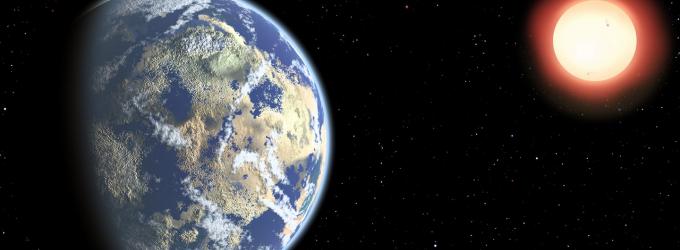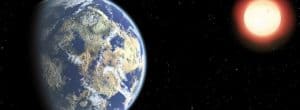
 The universe is 13.8 billion years old, while our planet formed just 4.5 billion years ago. Some scientists think this time gap means that life on other planets could be billions of years older than ours. However, new theoretical work suggests that present-day life on Earth is actually premature from a cosmic perspective.
The universe is 13.8 billion years old, while our planet formed just 4.5 billion years ago. Some scientists think this time gap means that life on other planets could be billions of years older than ours. However, new theoretical work suggests that present-day life on Earth is actually premature from a cosmic perspective.
“If you ask, ‘When is life most likely to emerge?’ you might naively say, ‘Now,’” says lead author Avi Loeb of the Harvard-Smithsonian Center for Astrophysics. “But we find that the chance of life grows much higher in the distant future.”
Life as we know it first became possible about 30 million years after the Big Bang, when the first stars seeded the cosmos with the necessary elements like carbon and oxygen. Life will end 10 trillion years from now when the last stars fade away and die. Loeb and his colleagues considered the relative likelihood of life between those two boundaries.
The dominant factor proved to be the lifetimes of stars. The higher a star’s mass, the shorter its lifetime. Stars larger than about three times the Sun’s mass will expire before life has a chance to evolve.
Conversely, the smallest stars weigh less than 10 percent as much as the Sun. They will glow for 10 trillion years, giving life ample time to emerge on any planets they host. As a result, the probability of life grows over time. In fact, chances of life are 1,000 times higher in the distant future than now.
“So then you may ask, why aren’t we living in the future next to a low-mass star?” says Loeb.
“One possibility is we’re premature. Another possibility is that the environment around a low-mass star is hazardous to life.”
Although low-mass, red dwarf stars live for a long time, they also pose unique threats. In their youth they emit strong flares and ultraviolet radiation that could strip the atmosphere from any rocky world in the habitable zone.
To determine which possibility is correct—our premature existence or the hazard of low-mass stars—Loeb recommends studying nearby red dwarf stars and their planets for signs of habitability. Future space missions like the Transiting Exoplanet Survey Satellite and James Webb Space Telescope should help to answer these questions.
*******
AUGUST MOON STAR PARTY. On Saturday, August 13, 7-10 p.m., Westchester Amateur Astronomers will provide telescopes for public viewing of the August Moon and planets Saturn, Mars, and Venus—plus stars and nebulae.
Location: In the Christian Science church parking lot at 7855 Alverstone Ave., Westchester (One block west of Sepulveda, at 79th St.). Children are welcome—bring them and learn astronomy basics together. The event is free and all are welcome to look through the telescopes, but you may bring your own telescope if you wish.
This is a good time to view much of our Solar System lined up across southern sky: yellow Saturn with its bright moon Titan; red Mars, now in gibbous phase; our own August Moon, also in gibbous phase; and Venus, returning to the evening sky in the west just above the sunset glow.
For information about the star party—or if you are interested in helping form a local astronomy club—call star party host Bob Eklund at (310) 216-5947 or email Bob at [email protected].
“All moons beautiful, but August moon most beautiful.” (from the movie “Teahouse of the August Moon”)


Be the first to comment